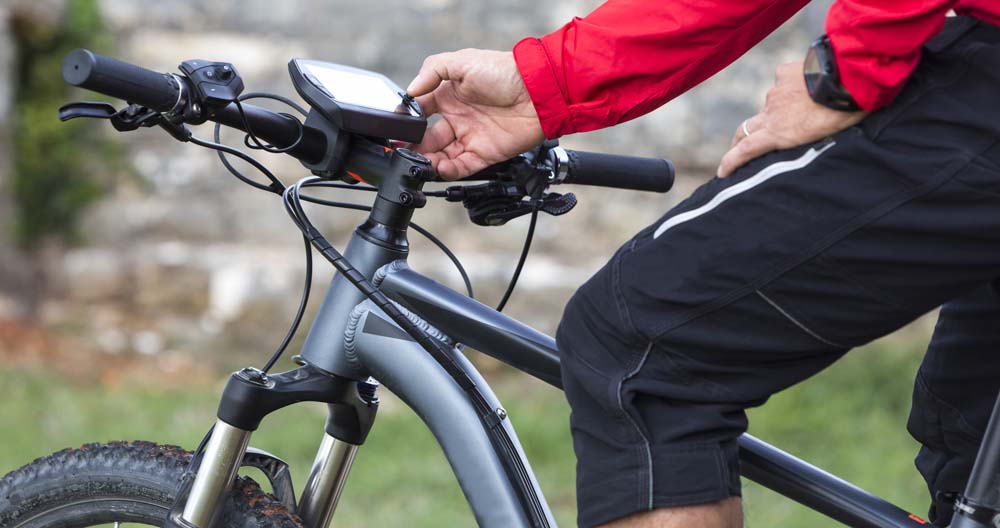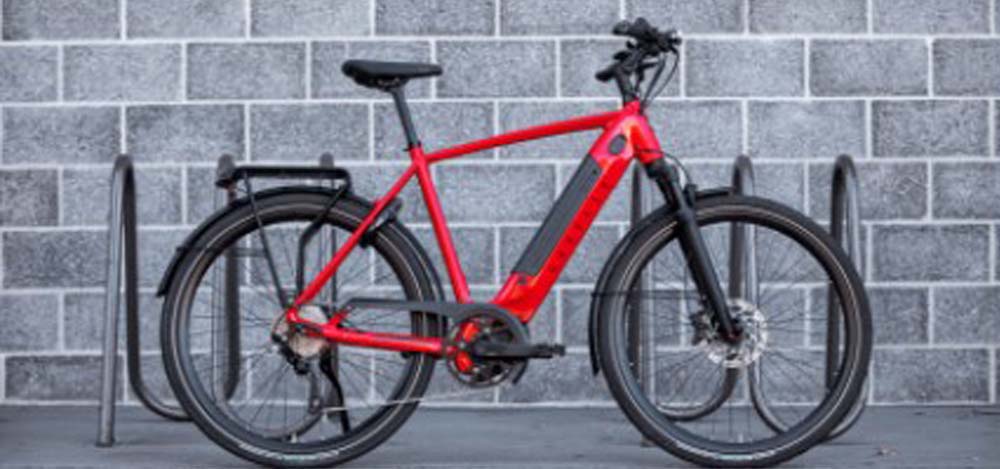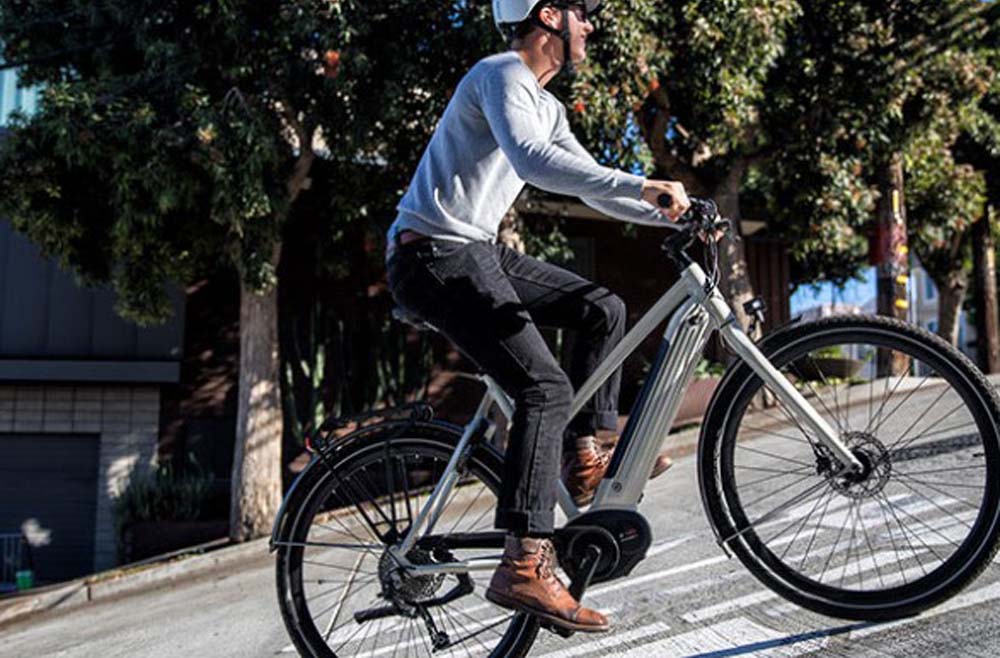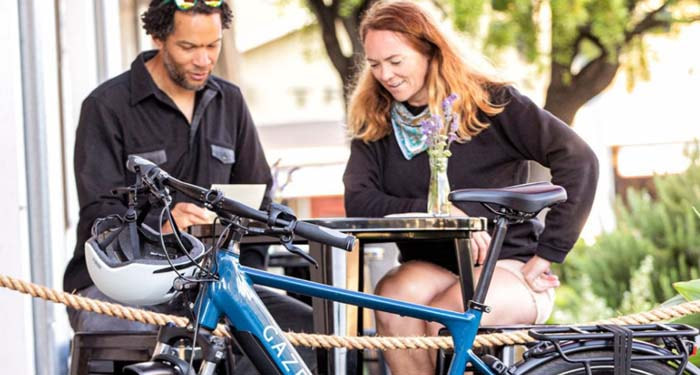 It may seem like ebikes are everywhere nowadays, and if you’ve started to learn about them, you’ve found lots of new jargon. Some words used to describe ebikes are just common terms used in a new way, such as amp and volt and others are entirely new such as Pedelec. While there are differences between how ebikes are designed and the components they use, they all have many things in common and it helps to understand the terminology common to most ebikes. Below is a list of ebike terminology you might find useful as you go about your journey to understand this new transportation mode. Acoustic bike A bike that does not provide assistance to the rider may be known as an acoustic bike. This label is in the same tradition of a guitar, i.e. electric versus acoustic guitar. Other labels for include non-assisted, traditional, non-electric and non-motorized. After market kit This is a collection of components to convert a non-assisted bike to an ebike. Also known as a DIY (Do It Yourself) kit. Amp-hours (Ah) Ampere-hours or Amp-hours is a unit of measurement that describes the rate of the flow of the battery current over time. It is considered the amount of energy that passes a particular point in an hour and is used to describe a battery’s capacity. Amps (A) Ampere or Amp is the standard unit of measurement for current which is the rate of flow of electrical charge. It is used to describe the demand or supply of energy. The higher the amps of the system, the thicker the wiring you will need to accommodate the level of electricity. Auxiliary battery Some ebikes have the capacity to mount an extra optional battery and this will increase the range an ebike can travel. Battery This is one of the 3 key components of an ebike. The battery is a combination of cells that create a specific voltage and current that supplies electrical energy to the motor. Today they are usually NiMH or Lithium ion cells. The other two key components of an ebike are the motor and display. Battery management system The Battery Management System (BMS) monitors the state of the battery charge. It is designed to prevent damage to the battery and provides a safety function to prevent the battery from overheating. Brake kill switch This is a device that automatically turns off the motor when the brake lever is applied by the ebike rider. Brush type DC motor A brush type direct current (DC) motor uses brushes in the motor which are less expensive in terms of control electronics and manufacturer, but creates a wear point. Brushless DC motor A direct connect (DC) motor with no brushes is simpler and longer lasting than a motor with brushes since there are no wear points other than the bearings, although it is more costly in terms of control electronics. Cadence sensor A cadence sensor is a basic type of pedal assist technology utilized on low end ebikes. It measures how quickly the rider is turning the pedals by utilizing one or more magnets that are placed around the crank arms. The cadence sensor tells the controller to send a specific amount of power to the motor depending on the pedaling speed and selected pedal assist level. This can also known as a speed sensor. Cells These are individual electro-chemical devices that create electric current and are combined into packages known as batteries to provide appropriate voltage and current for a specific function. Ebike bike batteries are specific to a bike brand. Connectors These are the fittings that allow the electrical components and wiring to be connected. These are designed to be easily unplugged or released for service, but are proprietary for different manufacturers. Also know as harnesses. Direct current Direct current is a form of electrical current in which one lead is positive and the other negative. Often expressed as DC. Disc brakes This style of brake consists of a metal disc around 6 inches in diameter that is attached to the center of the wheel axle. When the brake levers are squeezed, they activates a caliper that compresses a pair of pads against the rotor to create friction that slows or stops the rotation of the wheel. Most ebikes today have disc brakes because they allow stopping with less force and to stop quicker than was available from the older style rim brakes. Display A display is the way the rider interacts and controls the operation the ebike and displays data such as assist level, battery charge, speed and distance. It is sometimes built into the frame or the function is provided on an app for a smart phone that can be mounted on the bike. This is also known as the user interface. Ebike An electric bike (ebike) is a regular bicycle with the addition of a motor, battery, and display to assist the rider or is controlled by a throttle rather than the rider’s effort. Is regulated by state and local laws in the US according to precise legal definitions that determine its need for registration, insurance, and licensing. Also known as a Low Speed Electric Assisted Bicycle. Electric Pedal Assist Cycle (EPAC) This is what the European Union calls an ebike. E-mountain bikes This is an ebike designed for biking off road on surfaces such as dirt, gravel, and crushed limestone. Like a non-assisted mountain bike, it usually has sturdier suspension, aggressive tires and braking, and is designed for nimble handling and inclines. Geared hub A geared hub is a style of motor that uses internal gears inside the hub to reduce cost and increase performance. Hub motor This is an electric motor designed to assist the rider and is located in the hub of the rear (more common) or front wheel. Lithium-ion batteries There are different types of batteries available in ebikes, but lithium-ion is the most popular because they are rechargeable, relatively lightweight, and have long life considering the energy they provides. Lithium batteries can be dangerous and need a battery management system (BMS) to reduce the risk of fires during storage, transportation, and use. Lithium battery fires are actually rare. Mid-drive motor This is a motor located in or adjacent to the bottom bracket of pedal axle of an ebike. Also known as a central motor or bottom bracket motor. Motor This is one of 3 key components of an ebike. It is the component that converts electrical energy supplied by the battery to mechanical energy. It uses the electricity supplied by the battery to help make the ebike move. The other two key components of an ebike are the battery and display. Newton-meters (Nm) Newton-meters are the unit of measurement used to describe the torque output of a motor. NiMH battery Nickel Metal Hydride battery is non-toxic and a higher performer than lead acid, but less desirable than lithium. Rarely found in ebikes. Pedal to start Some ebikes require the user to pedal a few strokes or gain a certain speed by pedaling before the motor can be activated. Pedelec This is a term popular in the UK and Europe and would be called a Class 1 ebike in the US. It refers to a bike with a motor that assists the rider while pedaling and is limited to a power output of 250W and a speed of 15.5 mph (although a Class 1 is defined to be slightly faster at 20 mph). The motor is designed to switch off when it reaches the speed of 15.5 mph. Variants are the PAS paradigm used in Japan and EPAC in Europe. Range The range is the distance an ebike can travel on a single charge of the battery. Range is dependent on the size and age of the battery, how efficiently it uses power, rider weight, terrain, temperature, wind resistance, and assistance level utilized. Typical ranges are 30 to 70 miles. Regenerative braking Regenerative braking is a feature that recovers energy that is generated by the ebike so it is not lost and can be used to recharge the battery. This is the energy that is typically generated on long, steep declines or when the bikes is rolling without using power. S-Pedelec This is a faster version of the Pedelec term used in the UK and Europe with the “S” standing for “speed”. This ebike would be called a Class 3 ebike in the US. An S-Pedelec definition includes assistance only when the rider is pedaling, and has a power output maximum of 500W and maximum assistance up to 28 mph. They are not legal for general use as a bicycle in the UK and Europe and to use one requires registration, insurance, and a drivers license. Speed sensor This is a device that the detects the rate or pedaling and is used to activate power in an ebike. This sensor does not provide as smooth of a ride as a torque sensor system. Spokes Spokes are part of the ebike wheel. They are thin metal rods that runs from the wheel hub to the outer rim. The more spokes on a wheel and the thicker the gauge, the stronger the wheel will be because force applied to the wheel will be shared by each spoke. Spokes on ebikes with a rear motor are thicker and shorter than wheels without a motor in the hub. Sprocket
A sprocket is a metal disk with protruding teeth found on the rear wheel of a ebike. The teeth engage with the links of the chain. There will be one sprocket for every gear on the rear wheel. Usually ebikes have a single sprocket on the pedal crank. Throttle This is a device operated by the rider to control the speed of the ebike without having to pedal. It can be twist grip, thumb operated. Torque The rotational power of the motor is torque. The higher the torque, the more turning power the motor produces and the more assistance it provides to the rider. Torque is particularly important when travelling uphill. Torque sensor The torque sensor tells the motor how much pedal assistance to provide to the ebike. A torque sensor detects how hard the rider is pedaling and measures the energy applied by pedaling. It continuously analyzes effort rather than just checking for rotation at a handful of intervals, and thus is able to adjust the motor’s assistance dynamically. An ebike with a torque sensor will feel more natural like riding a non-assisted bike. It only delivers the amount of power needed and this can extend the battery range although this sophistication makes it more expensive than a cadence sensor. Twist & go The name comes from the motion of twisting a throttle to make it go with pedaling not required. This term is used in the UK and Europe that would be called a Class 2 in the US. These are not legal for general use as a bicycle in the UK and Europe and have the same registration, insurance, and licensing requirements as a motorbike or moped. Even in the US, a throttle only ebike is rare. Volts (v) This is a standard unit of measurement that describes electrical potential between two points, the pressure and strength of an electrical power source. It also can be described as the energy per unit of charge or the force that a given level of electrical flow can exert. The higher the voltage the better because high voltages pass through wires and motors more efficiently. Ebikes usually have 12-36v with 12 being the minimum so the motor does not need to work overtime to get up to speed and 36v is found on more powerful motors. Walk assist This feature is found in some ebikes and it assists a rider in moving the bike or helps them start riding. The motor accelerates the ebike to a speed of about 4 mph making it easier to walk the bike or provides a little momentum when just starting to pedal. Watt-hours (Wh) Watt-hours are the unit of measurement that describes the battery’s capacity. Capacity is measured by multiplying the amount of current the battery can supply (amp hours) by voltage to get watt-hours. The higher the watt-hours the higher the capacity of the battery and the greater distance an ebike can go on a single charge. Watts (W) The wattage is considered the “power” of the system and is calculated by multiplying both the flow of amps (current) and voltage (pressure) together. For riding on mostly flat terrain, 200 W are sufficient, but riding on hills will benefit from 600 W or more. Wiring harness This are the wires, connectors, and switches that carry electrical current and signals around the vehicle. All connections need to be secure for the ebike to operate. Comments are closed.
|
Earth Rider Blog about CycingAuthorSharon Kaminecki and others comment on adventures in bicycling and other stories Categories
All
Archives
August 2023
|






